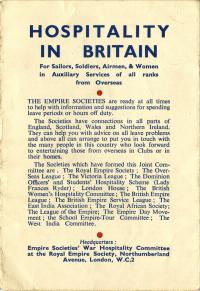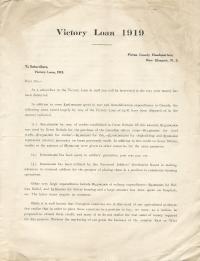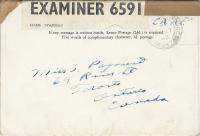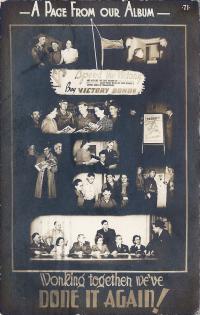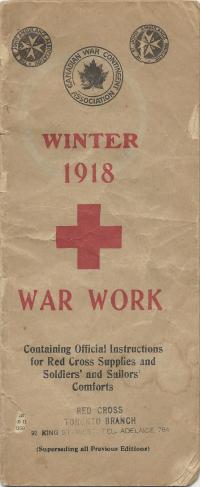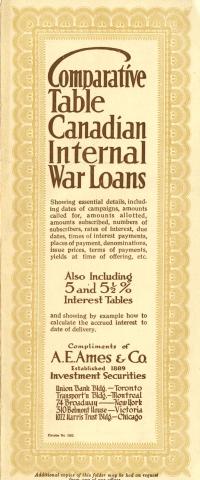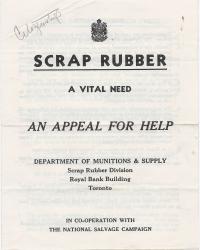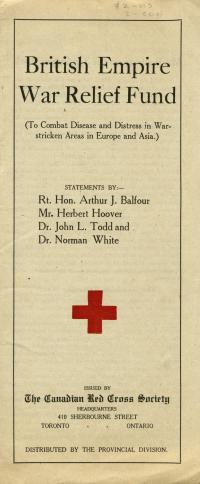Volunteering
Introductory Essay
The British Empire comes to Britain
During the Second World War, hundreds of thousands of men and women came to Britain from all parts of the British Empire, necessitating a massive volunteer effort to ensure that they were well taken care of while on leave and had as little opportunity as possible for getting into trouble.
Another Victory Loan
To prepare people to support the last Victory Loan, organizers in Nova Scotia outlined how their previous investments had been spent.
A home away from home in Scotland
The Scottish Rest Home for Serviceman, which this Toronto soldier visited in 1942, was opened by the Rotary Club of Edinburgh in June 1940; two years later, over 30,000 servicemen had already stayed there.
Speed the victory!
This postcard was sent to a soldier, likely by his former co-workers in Wallaceburg, Ontario, to celebrate their success in the 1943 Victory Bond campaign.
The 1917 Victory Loan campaign
This booklet stressed that money generated in the 1917 Victory Loan campaign would only be spent for war purposes, and would only be spent in Canada.
Mobilizing the charitable sector
This handy booklet contained instructions on how to make items for Canadians uniform, but also how to mail them and which charitable organizations were responsible for various activities.
The war at a glance
This fund-raising map brochure, likely from 1942, offered a compendium of useful information on the nations at war, their weapons, and the territory that was being contested.
Saving for the war
Carrying interest rates of between 5% and 5.5%, Canada's Victory Loans represented a sound investment, and an excellent opportunity to show patriotism by supporting the war effort.
Recycling rubber
By 1943, Japan controlled up to three-quarters of the world's supply of crude rubber - making recycling essential if the Allied war effort was to continue.
Helping the youngest war victims
One of the deadliest legacies of the First World War was disease - not just the Spanish flu, but typhus, smallpox, and consumption. As this fund-raising pamphlet argued, children in Eastern Europe were especially vulnerable.

